Crypto and interest
- 15 minute read

At first glance, crypto and interest seem to have little correlation, but if you think about it logically, that's unlikely. If you could get high interest rates risk-free, why would you even take risks with crypto?
In this article, we will explore the role of interest in the crypto market and how it might affect investments.
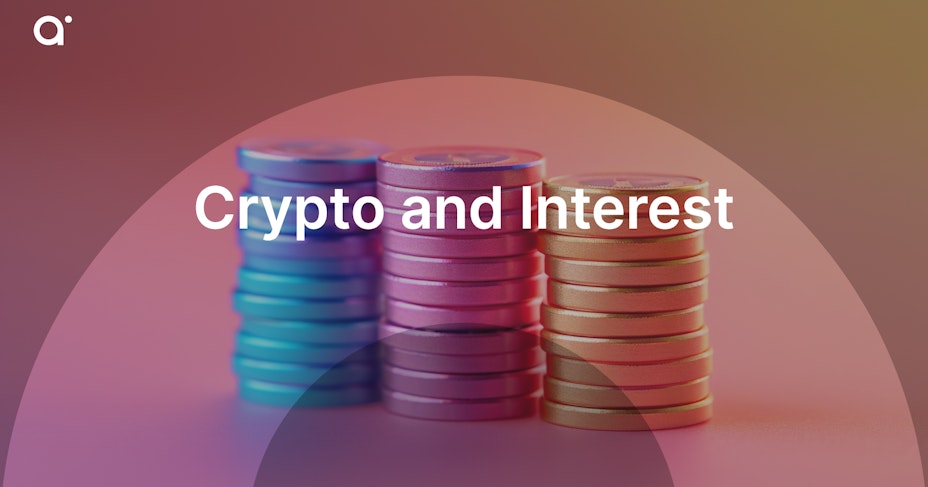
- The origin of interest rates in the EU, Great Britain and the U.S.
- Interest rates in other countries
- Central banks and interest rate setting and the impact of inflation
- The impact of the money supply on the economy and crypto
- Why interest rates can have a big impact on investments, such as crypto and stocks
- Hyperinflation makes investing much more interesting
- What does a healthy investment climate look like?
- Interest rates have so far had a moderate effect on the crypto market, but that may change as more money sits in the crypto market
- You can also obtain interest on your crypto, as in DeFi via farming and providing liquidity, by lending crypto and by staking
- The prediction is that interest rates will increasingly influence the crypto market, similar to the influence on the stock market
Inhoudsopgave
- Interest rates around the world
- Central banks
- The role of interest in investing
- The role of interest in the crypto world
- Interest on cryptocurrency
- DeFi interest forms
- Conclusion
Interest rates around the world

First, we need to know where interest rates actually come from. Who actually determines them?
Euribor
Euribor (Euro Interbank Offered Rate) is the interest rate that primary banks in the EU charge each other for time deposits (balances fixed for a certain period) of up to one year. It is also used to set prices for various financial products, such as mortgages, interest rate swaps, and bonds.
The current Euribor rate is calculated from a survey of 18 banks with the highest volumes in the EU. After removing the highest and lowest 15% of rates, an average is determined. This makes Euribor a foundational interest rate for the EU's financial landscape.
LIBOR
LIBOR (London Interbank Offered Rate) was the global standard for interbank interest rates until 2023. It set rates in multiple currencies, including the USD, EUR, JPY, and GBP. However, following a scandal where rates were manipulated by banks for personal gain, LIBOR was abolished, although the USD LIBOR still exists.
Interest rates in other countries
Commercial banks in different countries set their own interest rates based on economic conditions, often influenced by central bank rates. For example, in Turkey, where inflation is around 60%, the interest rate is close to 50%. Such extreme conditions mean that the value of money decreases rapidly, forcing people to either spend immediately or lose purchasing power.
These decisions are critical as they impact the broader economy. A misstep in setting interest rates could trigger an economic crisis, which is why central banks carefully monitor factors like inflation, unemployment, and economic growth.
Central banks
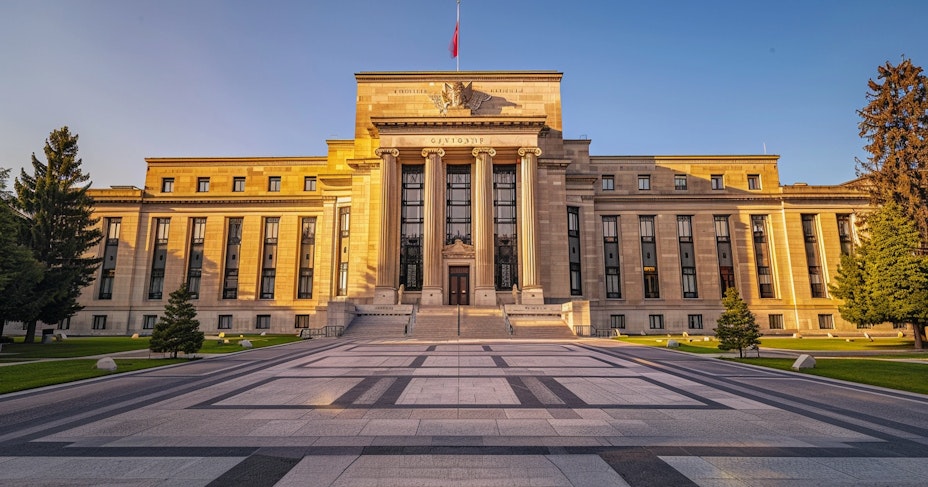
Central banks, such as the European Central Bank, the Federal Reserve or other central banks, set an interest rate at which other banks can borrow from them against collateral. Commercial banks use this rate as a sort of floor for their own financial products, adding their own markups for things like profits, insurance, personnel costs and the like.
Thus, central bank interest rates are a very important rate for a country's financial environment. The central bank monitors certain key values, such as inflation (also known as money depreciation), unemployment and economic growth. For example, if inflation gets out of control, the central bank may decide to raise interest rates, making money more expensive. This is known to curb inflation because investing then costs more money. If inflation is below 2%, interest rates can be lowered.
The impact of central bank monetary policy
These decisions must be well thought out because they have a great impact on society as a whole. If interest rates are wrong, an economic crisis can easily break out, which is why the role of the central bank in setting interest rates is essential. In calm and good times, inflation will be around 2% (the target number of many central banks) and when things get more turbulent on the economic front, the central bank will try to adjust the interest rate so that gradually inflation returns to around 2%.
Sometimes these banks will even take measures such as Quantitative Easing, where the money supply is greatly expanded and much more money becomes available for investment. This has a significant effect on interest rates as well as on the stock market and indirectly on the crypto market. Consequently, these kinds of crude measures are only taken at critical times, such as during corona and after the 2008 financial crisis.
The role of interest in investing
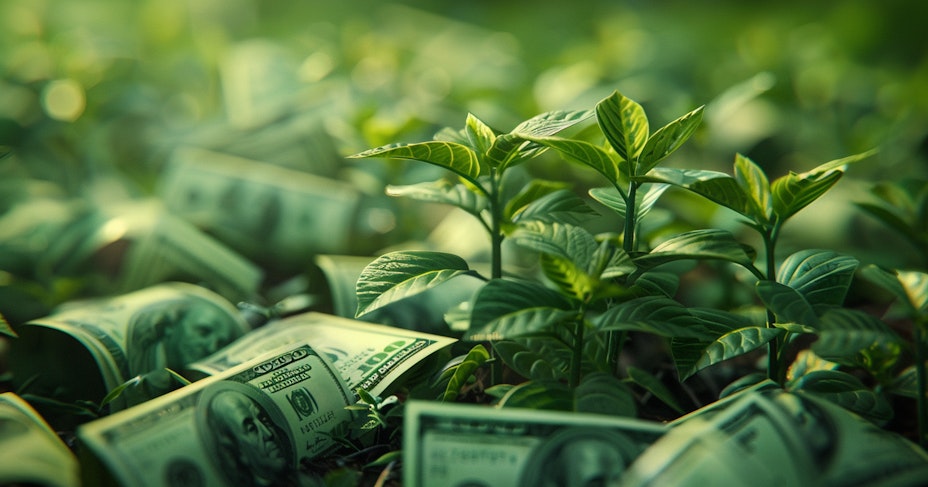
Suppose you could earn 10% interest on your savings in a stable economic environment. Would you still invest in stocks, which historically yield about 8%? Probably not. Interest rates play a crucial role in whether investors choose safe, interest-bearing accounts or riskier assets like stocks.
The higher the interest rate, the less likely investors are to risk money in stocks or crypto. On the other hand, low interest rates make investments more appealing as they offer the potential for higher returns.
High inflation and interest rates
In countries with high inflation, like Turkey, investing in tangible assets such as gold can be a good idea. While these investments may offer lower returns compared to stocks, they are also less risky, especially when local currency values are plummeting.
Countries with rampant inflation often experience an exodus of capital as investors seek safer or more profitable opportunities abroad. Only when interest rates catch up to inflation do people begin to trust the local currency again.
Therefore, countries with such high inflation risk the money flowing away to all kinds of investments outside their own country, because possessions domestically become worth less and less or are too risky to invest in. Only when interest rates are higher or equal to inflation can you still fiat money persist. Yet high inflation is a very bad sign for a country; it can be a prelude to hyperinflation, with fiat money becoming worth less and less.
A famous example is German hyperinflation, where you had to pay billions of German marks for a loaf of bread. Inflation was about 2500% per month, so if you didn't buy anything from your wages today, it was still worth about half a day later. People turned to barter because money really wasn't worth anything anymore. Other examples are Argentina, Zimbabwe and now so Turkey to a lesser extent.
Healthy investment climate
So for a healthy investment climate, you need lower interest rates and low inflation. When interest rates are around 4% and inflation is around 2%, it is very beneficial to invest in stocks, for example, because on average you get a much higher return on your money. This higher yield is worth the risk of investing. After all, a simple calculation shows that with an interest rate of 4% and an inflation rate of 2%, your total sum will be worth 2% more over a year. With stocks, you will find that they are worth an average of 8% more a year from now, minus the 2% you would have had otherwise. Moreover, stocks or other investments are not subject to inflation or depreciation, an aspect that is sometimes forgotten in such calculations.
The role of interest in the crypto world
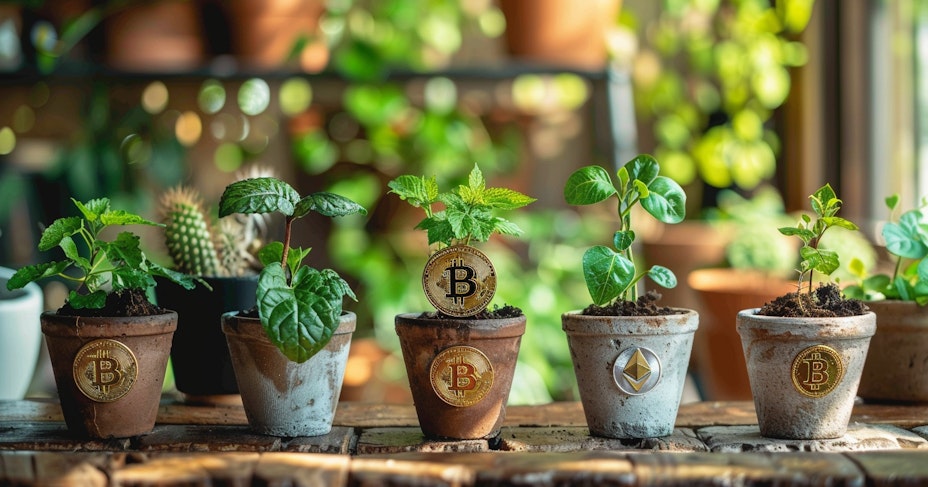
Similar considerations are also made for investing in cryptocurrency . The lower the interest rate, the more interesting it becomes to invest in crypto. Still, this is a very different market. Cryptocurrency is a lot more volatile than stocks and other investments. The risks are a lot higher. Therefore, the role of the interest rate in the crypto market can be considered a moderate influence so far.
Crypto and the outside world
Over time, the outside world seems to be having a little more influence on the investment climate in the crypto world. Things like interest rates, unemployment figures, consumer spending and other important key numbers from the economic world seem to have more and more impact on the movement of prices of Bitcoin and the altcoins . Still, it remains a world unto itself.
If we look at interest rates we will see that they have a similar impact on crypto as they do on other investments. When interest rates drop it costs less to borrow money and invest it in cryptocurrency. People in a hurry can take advantage of this to get some more momentum into their crypto adventures. Especially in a hefty bull market investors can do this. The risks are then a lot lower and the chances of paying the money back and getting a pretty penny out of it are favorable, but nothing is certain in crypto land and borrowing to invest is an additional risk.
When interest rates are higher, this is an additional risk. In crypto, nothing is ever certain and so when interest rates are high, you have to pay quite a bit of interest and also bear the risk of loss. Therefore, investors will be more cautious about this and put borrowing on hold. Money then just costs too much to borrow. If they stay in the market, they will do so mainly with their own money and wait for interest rate cuts.
Market cap and growth crypto
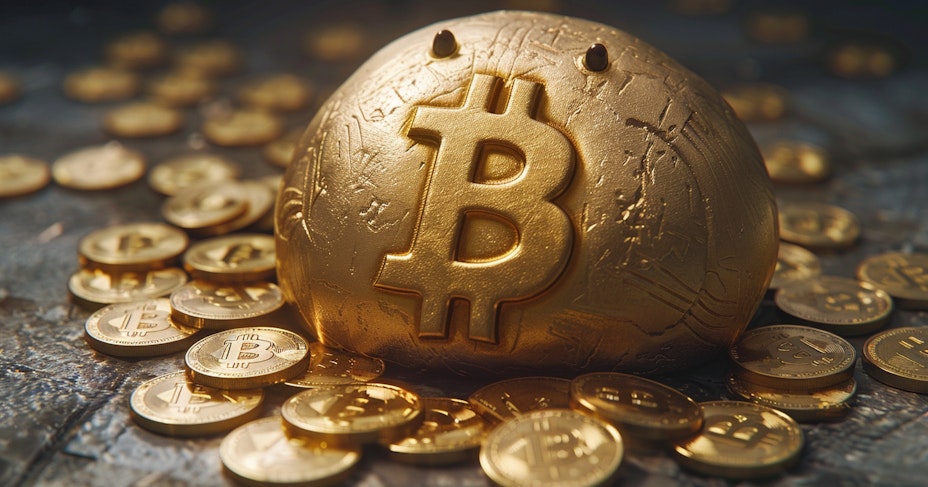
It does seem that the more money invested in cryptocurrency, the more mature the market becomes and the more it begins to resemble traditional investment products. This is also because it is becoming more difficult to move Bitcoin, the market leader, up or down. This requires such large amounts of money that volatility decreases as more money is put into Bitcoin in particular. Altcoins can still make weird jumps, but the top coins will become less and less volatile because of the high amounts of money already in a cryptocurrency.
If there can no longer be as much earning as in early 2018, when a lot of coins lost their All Time High experienced and went as much as 10-30x over the top, then the likelihood of high profits also diminished a lot and other things, such as interest rates and other economic aspects, began to have more and more influence. In the days when borrowing money cost absolutely nothing, around the corona crisis, and there were even negative interest rates, this was a starting point for excessive borrowing, which happened. Money cost absolutely nothing, so many people at that time thought borrowing and investing was a good plan, because on average it yields more than 0. On top of that came Quantitative Easing, a widening of the money supply to make borrowing more attractive and money cheaper. At that time, there will also have been quite a bit of borrowing to invest in crypto.
Interest on cryptocurrency
You can also get interest on cryptocurrency through a variety of opportunities on consensus protocols or DeFi .
Proof of Stake interest
At Proof of Stake you get interest on cryptocurrency you stake. They call this staking cryptocurrency. By proving that you have staked cryptocurrency, you get paid for it. In doing so, you help keep the network safe, although you may not easily see it that way. With Proof of Stake, the nodes , which secure the network, a fee for maintaining the Proof of Stake consensus protocol, in which the nodes determine whether a new block in the blockchain correct.
Usually, a node must put quite a few coins from a network at stake and have special software and hardware to participate. These coins are at stake because if they approve wrong blocks, they get a penalty which they pay with their stake. They call that a slash. By setting this up this way, nodes stay honest because of the economic principle that approving erroneous blocks costs more than it can earn them, for example by generating double spending or a 51% attack . This keeps a blockchain very secure. A node can even have all its cryptocurrency at stake taken away and lose its function as a node.
To node or not to node
Most nodes are delegates in a Delegated Proof of Stake network. If you strike coins on a broker or exchange, you are not a node. You don't have to approve blocks. The exchange or broker does this for you. He is the delegate and stakes crypto as a node. For this he charges a portion of the extra revenue your crypto brings him. Usually this is a percentage of around 20%, with you getting to keep 80% without having to be a node.
For many ordinary investors, maintaining a node is also too technical and yields relatively too little. You usually have to put in a considerable amount of money and you do get quite a few extra coins, but you run the risk that the coin will become worth less, you have high costs for maintenance, you have to invest a lot of time in the technical aspects, you can get a slash, and of course you don't have any customers who deposit their coins with you as a delegate, so the revenues remain poor.
DeFi interest forms
Another way to seek interest in the crypto world is DeFi, decentralized finance. You can earn income in this world in a number of ways. We will take a look at some of the possibilities.
Lending for interest
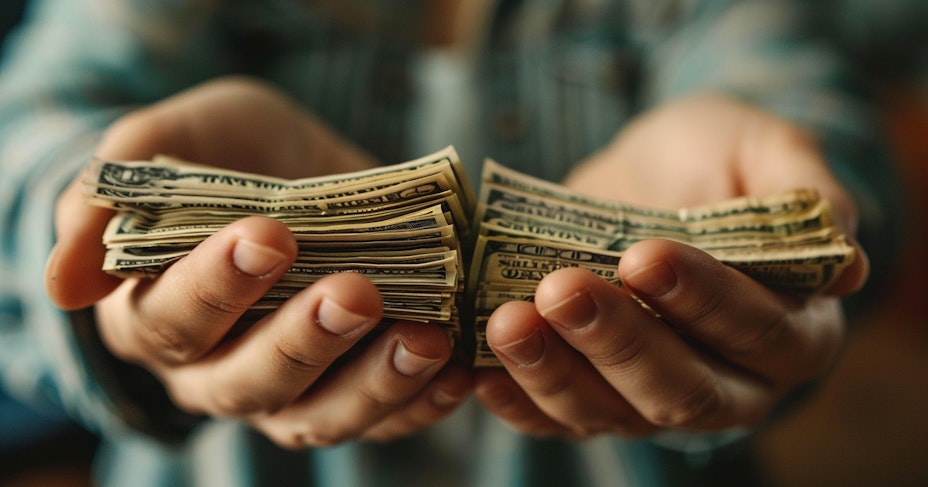
You can lend assets to others through all kinds of platforms. On platforms like AAVE, Compound or Maker, you can lend cryptocurrency and receive compensation for it based on terms in a smart contract . The lender receives interest for this and the borrower must repay the amount plus the interest. For this, the borrower puts up collateral, which is forfeited according to specific rules from that smart contract, for example, if his investments fall and he threatens to hit the ceiling, where his collateral would no longer be sufficient to repay everything. At such a time, the smart contract liquidates his loan plus the collateral, so the lender gets his money back. This is the great risk of leveraged trading.
Providing liquidity for interest
Another form of getting interest is providing liquidity to platforms. If there is trading in all kinds of crypto, there must also be providers. Liquidity providers ensure that certain coins can be traded by creating a liquidity pair. For example, if you put equal parts of Bitcoin and USDT into a BTC-USDT liquidity pair you make sure that people can buy Bitcoin for USDT and vice versa. It is true that you get very little interest for pairs that are used a lot, because there are a lot of people providing liquidity for this pair, so the proceeds have to be shared by all those people.
You can also provide liquidity for less common pairs, such as DOT-AAVE or a new coin with USDT. The danger with the first pair is that no one will exchange DOT for AAVE and you won't earn anything at all, beyond the danger of the price of those coins falling. In the second case, you will usually be able to get very high interest rates, but it can also be over in no time with a new coin. Once the coin starts falling in price your investment can become worth much less in no time, even if you get 50% interest or more. This type of interest yields more, the fewer suppliers of liquidity in a given pair.
Yield farming for very high interest rates

Another form of this is yield farming. Here you often lock in the deposit for a specific period of time, sometimes getting very high interest rates that can exceed one hundred percent. Of course, that's not just for the sake of it. You also run high risks. Because your deposit is frozen for a period of time, you cannot do anything about it if something goes wrong, such as a rug pull or the sudden drop in your investment. By the time you get to take the deposit out, you may have a lot more coins, but they may be worth nothing or very little.
You often see this with new coins on a DEX (decentralized exchange). Because no one knows what this coin will do, many investors are reluctant to put money into it, so those who do receive high interest rates for providing liquidity. Experience shows that most new coins become worth significantly less over time. A good reason to be wary of this.
An underexposed aspect of this is that as investors receive interest on their cryptocurrency, the coins tend to become worth less per unit. You see this inflation especially with new coins that have yet to use liquidity savings or yield farming on sales, which can cause the price to plummet quickly. With more established coins, this effect is a lot less, but it can start to have an impact over the years, especially with blockchains that give high percentages, such as Polkadot or Kusama, which yield more than 10% per year through Proof of Stake. Only blockchains that are becoming increasingly popular can absorb this due to ever-increasing demand, such as Ethereum or Solana.
"The most powerful force in the world is compound interest."
Conclusion
Interest rates are increasingly affecting the crypto market as more capital sits in cryptocurrency and especially Bitcoin, the market leader. In earlier times, when Bitcoin had a market cap of 100 billion the rate could double fairly easily by adding an additional 100 billion, making the interest rate just a drop in the bucket. Now that the market cap is 1,000 billion it becomes increasingly difficult to double, because of course that money has to come from somewhere. By comparison, the largest companies in terms of market cap are worth around 3,000 billion at the time of writing.
As interest rates affect all investment has it on cryptocurrency as well. It looks a lot like the more Bitcoin becomes worth, the less stretch there is in its price, the more influence interest rates will have, because Bitcoin is becoming increasingly mainstream and begins to resemble other established assets. The cheaper the money, the easier or more advantageous it is to invest. The first interest rate cut by the ECB in 2024 is now a reality. Will this attract investors back to investing in cryptocurrencies?
The question will be whether cryptocurrency will still remain an attractive investment if the margins keep getting smaller. After all, when the investment climate is good, you might as well invest in stocks. These have also historically had high returns, but without the violent ups-and-downs you see in the crypto market.


